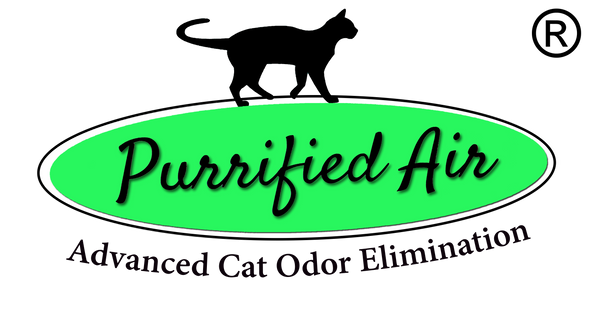
The challenge of litter box odor removal in household settings
Share
The challenge of litter box odor removal in household settings
A comparison of available products

Odor from animal waste is primarily from one chemical in urine – ammonia – and three in feces -- methyl mercaptan, skatole, and hydrogen sulfide. Different filter media is required to remove these different odious chemicals from household air. Zeolite is very good at removing ammonia odor. Huge quantities are used in livestock farming buildings to reduce ammonia/urine odor there. Activated carbon, while a very poor ammonia remover, excels at removing feces odor. While both urine and feces contribute to litter box odor, the ammonia in urine is the bigger contributor.
Not only is it important to choose the correct filter media for a pet odor air purifier, you will also want to find one with a sufficient quantity of media and optimal air flow through it. In simple terms, for both, more is better, meaning it will filter out more odor for a longer time, before you must replace the filter media.
During several days in November of 2020, deep in the bowels of the Purrified Air Lair we compared our product with a few others on the market. The table below shows our results. The takeaway: Purrified Air has from 6 to 90 times more filter media, and 11 to 54 times more air flow than the tested competition. Two of the products, Kitty Vac and Purr-Fect-Air, used no zeolite, making them virtually useless against ammonia, the main odor-causing chemical in animal waste.
| Litter box air filter brand |
MPH (*1) |
Exit Vent Size | CFM (*2) | Filter Media Quantity |
| Purrified Air | 5.28 | 4-1/2" diameter | 51.32 | 2 lb.-4 oz.(*3) |
| Kitty Vac | 1.34 | 1-1/8" x 2-1/8" | 1.96 | 5.9 oz.(*4) |
| Purr-Fect-Air | 3.52 | 3/4" diameter | 0.95 | 0.3 oz.(*5) |
| Purr-Ifier | 0.45 | 4-1/2" diameter | 4.37 | 1.6 oz. (*6) |
| Bio Strike Poof *(7) | -- | -- | -- | 0.7 oz. |
*1. Miles Per Hour (MPH) of air exiting filter as tested with the Proster digital anemometer, model MS6252A.
*2. MPH combined with Exit Vent Size yields Cubic Feet per Minute (CFM) of filtered air from calculation tools at engineering.com.
*3. Purrified Air uses a proprietary blend of zeolite, activated carbon, catechin and negative ion ceramic balls. The latter two ingredients are included as they not only help remove odor, but also potentially harmful mold spores and micro-organisms such as bacteria and viruses. Total net weight of filter media, one kilogram/2.2 pounds/35.2 oz.

*4. The Kitty Vac filter (shown below) media cartridge consists of a hard plastic case whose contents appeared to be entirely activated carbon, but weighing in as the top challenger at 5.9 oz.
*5. The Purr-Fect-Air filter (shown below) media appeared to be activated carbon impregnated foam filter pads weighing in at a feather weight of 0.3 oz.

*6. The Purr-Ifier filter media appeared to be activated carbon impregnated filter pad which encased a plastic honeycomb substrate supporting a layer of activated carbon and zeolite. We were not able to determine what portion of the total 1.6 ounce weight was taken up by the plastic honey comb hitting the scales at 1.6 oz. Bantamweight, at best.


Danger, danger Will Robinson. Note the "Airflow 40-50 cfm" above. That, in fact is what we tested their fan at with zero load. Yet, we stand by our finding of 4.37 CFM under the load of their own filter media. In other words, an implication that this product will filter 40-50 cfm of air is not accurate, at all.
*7. We were not able to evaluate a whole Bio Strike Poof unit. We evaluated a filter media cartridge. It appeared to consist of foam filter pads impregnated with activated carbon and zeolite taking it to the mat at 0.7 oz.
Here is what the whole unit looks like atop a covered litter box. It appears similar in shape and size to the Purr-ifier.

Data don't get no rawer than this:

